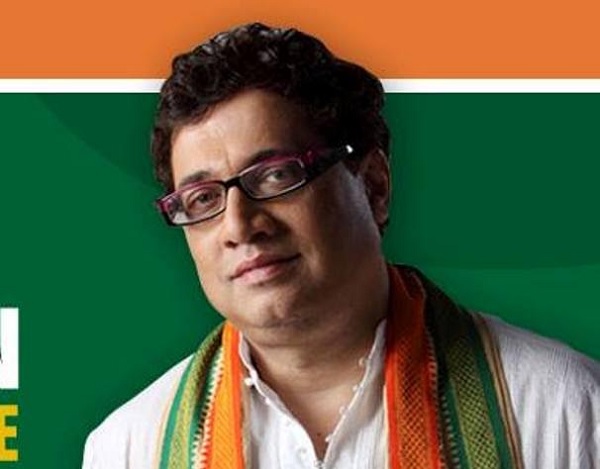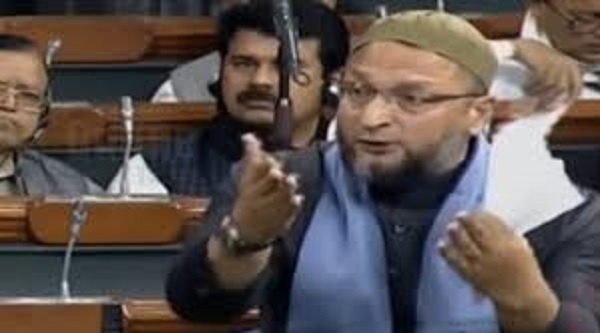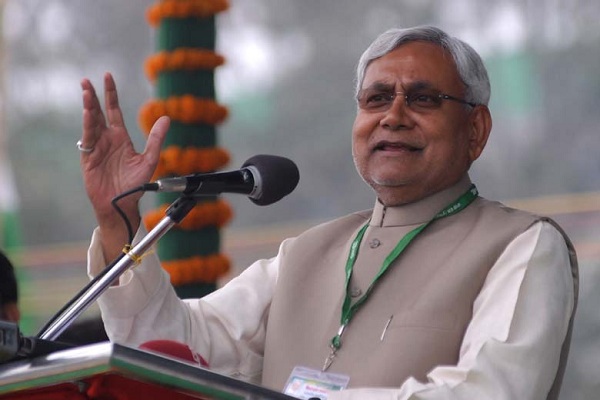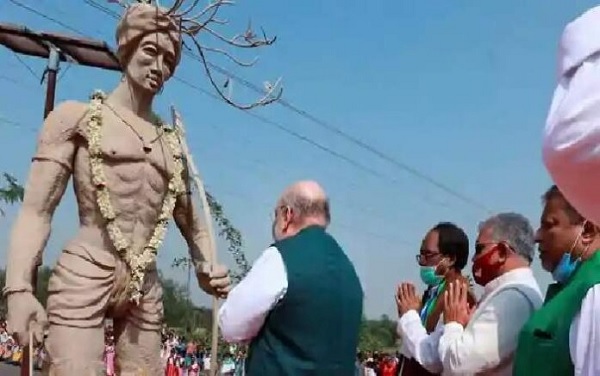
by admin | May 25, 2021 | Corporate, News

TMC MP Derek O’Brien
New Delhi: The TMC on Sunday lashed out at the BJP over its assertion that it has allocated the highest-ever funds for railway works in West Bengal, and claimed the state has been deprived of funds for years and multiple rail projects shelved. The allocation of Rs 6,636 crore to poll-bound West Bengal is the highest-ever funds earmarked for the state in the history of Indian Railways, minister Piyush Goyal had said soon after the Union Budget was announced, blaming successive state governments for the delay in rail projects in the state. Taking to Twitter, TMC MP and national spokesperson Derek O’Brien said, “In election season, BJP’s tourist gang are touting ‘record Railway allocation’ for Bengal. The truth is, multiple rail projects have been shelved in Bengal and funding choked all these years.”
Posting two documents, O’Brien has highlighted “How Bengal has been deprived of Railways funds for years.” In the document, the Rajya Sabha MP has highlighted how over one dozen rail factories across Bengal, initiated by Mamata Banerjee when she was the Minister of Railways, have received only a token financial allocation this year. “The new rail coach manufacturing unit at Kanchrapara had been allocated Rs 74 lakh in the last budget. This year the allocation is just Rs 1,000. (One thousand rupees, not a typo!),” he said. He further said in Budget 2020 the Centre shelved 20 new connectivity ventures and 10 upgradation projects launched by Banerjee as Minister of Railways, especially in rural Bengal.
“In Budget 2019 the Sealdah Coach Repair Factory – One thousand rupees Rail Museum in Bolpur – One thousand rupees! Coach Washing Workshop in Howrah – One thousand rupees!The list goes on,” he said. Accusing the BJP of only focussing on states in election year, he said that from 2016-17 to 2020-21, no new lines in Railways were announced in South-Eastern Railways, let alone Bengal. In 2020-21, four new projects were announced for SER but all of them went to Odisha and not Bengal. Banerjee had inaugurated the East-West metro corridor as the Rail Minister. “The BJP government has allocated funds very slowly for it since 2014. Kolkata Metro received an outlay of Rs 850 crore for 2019-20 which came down to Rs 750 crore in 2020-21. Come election year and this outlay is Rs 1330 crore, ” he said.
O’Brien also alleged that BJP states benefitted at the expense of the rest of India, citing two examples of the the bullet train project and the broad gauge like in Surendranagar in Rajkot. He also highlighted how in Budget 2020-21, Rs 980 crore was sanctioned for the National Railway University in Gujarat. The Railway minister has said that there is no shortage of funds for the state and blamed the political dispensations for the delay in execution of works. West Bengal has 53 ongoing projects including new lines, gauge conversion, doubling projects costing Rs 48,275 crore for 4,463 km. “The allocation for West Bengal is the highest-ever in the history of Indian Railways. It is 2.5 times the average amount allocated between Budget 2009-2014 and 26 per cent more than last year,” he had said while addressing a press briefing recently. “Projects there remain incomplete or are delayed because the state governments – first it was the Left front government and now the TMC– have been unable to provide land to us. Projects which are 45 year old are pending in the state. I appeal to Mamata didi to expedite the process and give us land,” he had said. Goyal said that due to non-availability of land, as many as 34 projects in the state have received only token allotment in the budget 2021-22.

by admin | May 25, 2021 | Opinions
 By Syed Zubair Ahmad
By Syed Zubair Ahmad
I am writing this piece in response to noted journalist Shivam Vij’s article recently published in The Print.
Several points raised by Mr Shivam Vij deserved to viewed in true perspective albeit they may appear digestible to some. He could be right in stating that the “BJP aims to invisiblize Muslims”, but his assessment that the saffron party doesn’t want Assaduddin Owaisi simply too hard to digest, given the narrative and counter-narrative is being built and disseminated by the media. Precisely, one fundamental feeds the other.
The politics of Asaduddin Owaisi’s All India Majlis-e-Ittehadul Muslimeen, or MIM, is certainly not the wise response to divisive politics of the Bharatiya Janata Party (BJP) which has uncompromisingly been furthering the RSS agenda of marginalizing Muslims “to the point of making them invisible”. No doubt the ‘secular’ parties have hugely disappointed the Muslims, but Owaisi phenomenon is disastrous for secular democratic polity of the country. It has only bolstered the allegations levelled against the Hyderabadi politician that he is “in cahoots with BJP”. In fact, the BJP wants more and more dissemination of Owaisi’s image to strengthen its majoritarian vote banks. Precisely, a visible Owaisi makes it even more easier for the BJP to make Muslims invisible.
The rise of BJP is chiefly contributed to the Ram Mandir movement during which former diplomat Syed Shahabuddin, who became MP from Muslim-concentrated Kishanganj constituency in 1991, had become a rallying point for the saffron party to consolidate Hindu votes. The formation of Babri Masjid Action Committee at district level across the country fueled the fire, triggering counter polarization in late 1990s. The BJP flourished from becoming a viable opposition to undefeatable ruling party in 2014. Now it has found a rallying point in Asaduddin Owaisi to hold on power and grow.
Remember the exaggerated coverage given to Owaisi during the 2014 parliamentary elections by television channels singing paeans to then BJP’s prime ministerial candidate Narendra Modi. His younger brother Akbaruddin Owaisi’s provocative remarks in 2013 when he stated that “if police is removed for 15 minutes, we (Muslims) will finish 100 crore Hindus”. This immensely helped the BJP/RSS workers who showed the clips of the divisive speech all across. The rightwing campaigners even distributed its CDs in millions. Even today Owaisi gets undue media coverage as if he is the sole representative of the Muslim community. Modi picked opposition leader while he was chief minister in Gujarat; he picked Owaisi at the Centre to hold on to power. He has been a blue eyed boy for TV channels who is heard aggressively speaking for Muslims.
Forget about Muslim issues, Owaisi is needed whenever Modi govt faces trouble. When the entire nation stood in bank queues lamenting Modi for demonetization, Owaisi chose to communalize demonetization by stating that automated teller machines (ATMs) ran short of banknotes in Muslim-concentrated localities. This is how Owaisi turns a common issue into a communal one to the benefit of BJP.
It is wrong to believe that BJP is allergic to bearded mullahs. Rather it wants the image of bearded mullahs with skull caps on TV screens – the phenomenon has been visible ever since Modi came to power in 2014. Notably, the Muslim Rashtriya Manch, an RSS affiliate, has mostly bearded mullahs.
Shivam Vij’s argument that the BJP could have won state elections in Rajasthan, Delhi, Karnataka and Madhya Pradesh by given some tickets to Muslims totally goes against the ideology of the saffron party as it runs the risk of losing majoritarian votes. It didn’t give any ticket to a Muslim in Bihar which has 17% Muslim population, but the outcome was in its favour. For the first time there is no Muslim in government in Bihar. There will be some Muslim representatives in Parliament and assemblies, mainly from Assam and Kashmir, but there presence will matter little.
In fact, BJP needs an Owaisi-like opposition to instill fear psychosis among Hindus. That’s why RSS leaders always say that ‘ there will be no Hindutva without Muslims’. Simply, they will be left irrelevant without having any polarizing figure.
In February a journalist friend of mine in Mumbai, a non-Muslim, confided to me that Owaisi’s speeches, gesture and posture had the “potential ingredients to polarize the people along communal lines”. She said that she was inadvertently added to a WhatsApp group, which dominantly had members from RSS and other right wing groups, where people mostly discussed Owaisi. She added that once a group member sought to know about the Citizenship Amendment Act (CAA), another one replied that since Owaisi tore up the copy of the Bill, it would definitely be a pro-Hindu.
Owaisi’s credential stands exposed when he and his party members deliberately made divisive speeches with a sole purpose to communalize anti-CAA sit-ins. Notably, the government pitted all its machineries –media included – to defame and communalize the sit-in protests going on all across the country, MIM’s former legislator from Maharashtra Waris Pathan made stated that “15 crore Muslims can dominate over 100 crore Hindus” (15 crore hain lekin 100 crore pe bhari hain) in presence of Owaisi on February 16.
Interestingly, more than 200 sit-ins were held to protest citizenship matrix across the country but not a single in Owaisi’s own turf, Hyderabad.

by admin | May 25, 2021 | Business, News

NEW DELHI — For the second time this year, the ruling Bharatiya Janata Party (BJP)-led Union government and the saffron party is facing a barrage of criticism from Opposition parties and certain sections of people on the formulation of contentious farm laws.
After the passing of controversial Citizenship Amendment Act (CAA) bill, efforts are being made by the Central government and the BJP at an organisational level to resolve the grievances of farmers protesting in New Delhi against the Centre over the three Central Farm bills.
Earlier, in February this year, anti-CAA protests had led to riots in New Delhi and protests especially in the Shaheen Bagh area. Now, since November 26, agitating farmers from Punjab and Haryana have entered the Delhi border protesting against the three Central Farm laws passed by the Union government.
The Central government said it is willing to engage in dialogue with the agitating farmers and resolve all their grievances related to the three Union laws related to agriculture. But the talks cannot happen on the roadside. Earlier, Union Agriculture Minister Narendra Singh Tomar had agreed to hold talks with the farmers on December 3.
The BJP top leadership has directed the party’s state units in Punjab and Haryana to continuously send reports regarding the farmers’ agitation in New Delhi.
BJP National General Secretary Tarun Chugh is keeping a close watch on the developments in the farmers’ protest. The Centre is preparing to resolve the misconceptions about the three Farm laws by interacting and holding talks with leaders of several farmers’ organisations. The BJP has also instructed its party’s Farmers wing (Kisan Morcha) to help them in this task. The saffron party has also instructed them to explain the provisions in the three Farm laws to the agitating farmers.
A senior BJP National level official told IANS, “All the three Farm laws have been formulated and passed in the Parliament after extensive discussions. These laws were debated on floor of Parliament. If the people associated with the farmers’ organisations study all the Farm laws in detail, they will find nothing wrong in the provisions. This protest is due to the misunderstanding of Farm laws.
As per sources in the Union Ministry of Agriculture, several rounds of governmental meetings have started after the farmers of Haryana and Punjab stormed the Delhi border since November 27. The demands made by the agitating farmers are being analysed. However, the Centre is not willing to budge, it appears.
The farmers’ organisations are demanding withdrawing of all the three laws. On the other hand, the Union government has reiterated that all the Farm laws would benefit the farmers adding that these laws cannot be rolled back.

by admin | May 25, 2021 | Corporate, News

Nitish Kumar
CM’s swearing-in ceremony on Monday; BJP names two non-entities from its lot to be deputy chief ministers
Shaheen Nazar | NEW DELHI
Nitish Kumar was elected leader of the NDA Legislature Party in Patna on Sunday, paving way for him to become chief minister of Bihar for the fourth time in a row. His swearing-in ceremony is scheduled for Monday, it was announced following the NDA meeting for which Defence Minister Rajnath Singh specially came from Delhi.
Leaders of four constituent parties of the NDA — JD(U), BJP, HAM(S) and Vikassheel Insaan Party (VIP) attended the meeting to take the “unanimous” decision on Nitish Kumar who is going to create history by becoming chief minister of Bihar for the fourth consecutive term.
Another announcement that followed Nitish’s election is that he is going to have two deputy chief ministers. According to reports, BJP MLAs Tarkishore Prasad and Renu Devi, both non-entities in the party, are going to replace three-term Deputy Chief Minister Sushil Kumar Modi. His stepping aside was in the air ever since the election results came. BJP may shift Bihar’s Modi to Delhi, either accommodating him in the Central government or party organisation.
The fractured Bihar result had left the BJP with no option but to re-elect Nitish as CM. It must be frustrating for the party’s state leadership that despite having 74 MLAs to JD(U)’s 43, they are obliged to remain a junior partner in the NDA government. Nitish knew his unique position. That’s why he preferred to go in slow motion and let the top leadership of BJP speak for him. The result came on 10th of November. He made no statements for the full three days. Then on Friday, he told the media that he has “made no claim on the CM chair, the decision will be taken by NDA.”
According to the Indian Express, senior BJP leaders had to persuade an ‘unwilling’ Nitish to continue as CM. they gave him an assurance that he would have “full independence as before” in running the government.
In a way Nitish is second time lucky. In 2015, too, when he fought in alliance with Lalu Prasad’s Rashtriya Janata Dal, his party got less number of seats than his ally. Still Lalu stick to his pre-poll commitment and made him CM because Lalu was barred by court from holding any constitutional position and his son Tejashwi was then a novice.
Five years later, BJP, too, is in an awkward position. With 74 seats in the 243-seat Assembly, it can’t form a government. Antagonising Nitish would mean pushing him to Tejashwi who is anyway waiting to prey. Senior RJD leader Manoj Jha has already questioned Nitish’s continuation as CM and warned of a “spontaneous” development: “How can someone become chief minister after getting 40 seats? People’s mandate is against him, he is decimated and should decide on it. Bihar will find its alternative, which will be spontaneous. It might take a week, ten days, or a month but it will happen,” he has been quoted by ANI as saying.
The man to be watched in the current scenario is Jitan Ram Manjhi, leader of NDA constituent Hindustani Awam Morcha (Secular) which has won four seats. For last 40 years or so the Maha Dalit leader has been a minister in all the governments in Bihar, be it Congress, Lalu or Nitish. In between he has even been chief minister for ten months or so when, after parliamentary election in 2014, Nitish had stepped down taking moral responsibility for the poll debacle. Manjhi has said that he would not join Nitish government. If he really means it, then it’s alarming.

by admin | May 25, 2021 | Corporate

Union Home Minister Amit Shah paying tributes to tribal leader Birsa Munda (File Photo, Image credit: HT Bangla)
Kolkata: The reported garlanding of the statue of an unknown tribal leader instead of Birsa Munda in Bankura of West Bengal by Union Home Minister Amit Shah on Thursday has exposed the poor planning and lack of homework on the part of West Bengal unit of the Bharatiya Janata Party (BJP). Besides it has raised questions as to why this entire trip was so hurriedly planned when elections are due in next summer. Political observers are of the view that instead of making political capital of the visit the BJP may end up losing the support of crucial Adivasi votes in Jungle Mahal area of the state. The Trinamool Congress (TMC) and Adivasi organisations have come down heavily on the BJP and the Union Home Minister. The Bharat Jakat Majhi Pargana Mahal has termed it as an insult to Birsa Munda, whom they worship as Bhagwan.
Meanwhile the ruling Trinamool Congress was quick to criticize Shah alleging that the latter hardly knows anything about Bengal. The embarrassing incident provided the Trinamool leadership the fodder to attack the BJP and calling Amit Shah and BJP ‘outsiders’.
On the other hand, to contain the damage, BJP leaders said that the Home Minister had not garlanded the little-known tribal leader but he had garlanded a portrait of Birsa Munda kept at the foot of the statue.
Amit Shah, after his visit to Bankura, tweeted on Thursday: “Paid floral tributes to legendary tribal leader Bhagwan Birsa Mundaji in Bankura, West Bengal today. Birsa Mundaji’s life was dedicated to the rights and upliftment (sic) of our tribal sisters and brothers.”
It needs to be mentioned that Birsa Munda was a tribal freedom fighter and a leader of the Munda community. He led his community against the British in 1899-1900. He died in the year 1900. The community numbers a little more than three and a half lakhs in West Bengal. It has a big population in Jharkhand and Odisha too.





